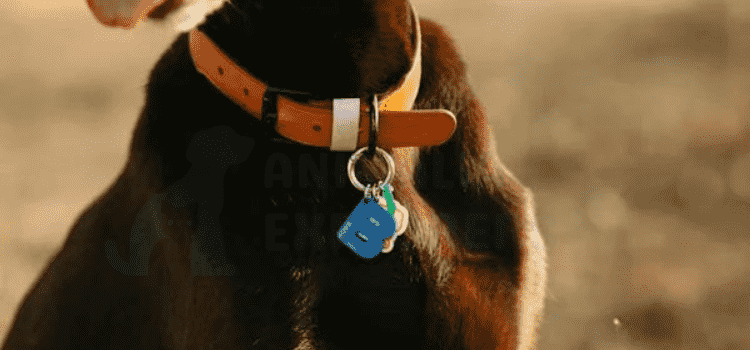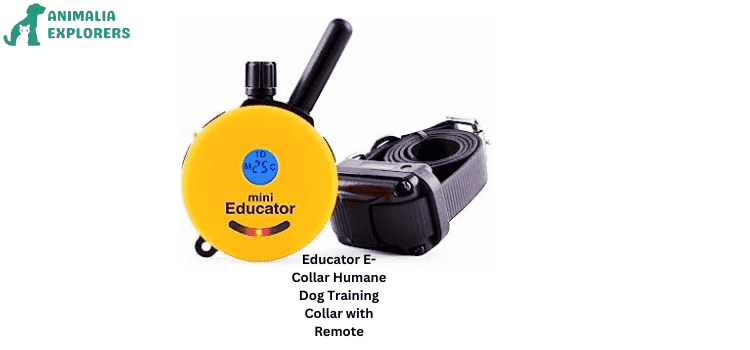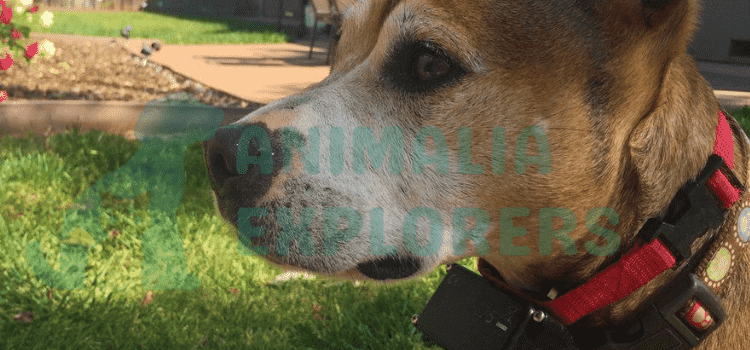Why the Most Powerful Shock Collar is Essential for Training Large Breeds

Are you tired of your large breed dog’s unruly behavior? Do you dream of a well-trained, obedient companion by your side? Look no further than the most powerful shock collar on the market! In this blog post, we will delve into why this essential training tool is a game-changer for owners of large breeds. Discover how it can transform your furry friend from a mischievous troublemaker to a disciplined and well-behaved family member. Get ready to unlock their full potential with the power-packed features and undeniable effectiveness that only the most robust shock collar can provide!
Introduction to Shock Collars for Dog Training

Shock collars, also known as electronic collars or e-collars, are a popular tool used in dog training. They are designed to deliver an electric shock through the collar to the dog when triggered by the owner or trainer. Shock collars have been used for many years and have evolved significantly in design and functionality.
While they may seem controversial, shock collars can be highly effective in training large breeds of dogs. However, it is important to understand how these collars work and how they should be used before incorporating them into your dog’s training routine.
How do Shock Collars Work?
Shock collars typically consist of a receiver that is attached to a collar worn around the dog’s neck and a remote control held by the owner or trainer. The remote control sends a radio signal to the receiver on the collar, triggering an electric pulse that can range from mild discomfort to a stronger jolt depending on the settings.
The idea behind using shock collars for training is simple – when a dog engages in undesirable behavior such as excessive barking or jumping on people, the owner or trainer can remotely trigger the shock collar as punishment. This creates an association between the unwanted behavior and an unpleasant sensation, which can deter future occurrences.
Types of Shock Collars

There are three main types of shock collars: manual stimulation collars, bark control collars, and GPS tracking/training collars.
- Manual Stimulation Collar – The owner or trainer controls this type of shock collar through a remote. It is often used for basic obedience training and can deliver a range of shock levels.
- Bark Control Collar – As the name suggests, these collars are designed to control a dog’s barking behavior. They are triggered by the sound of a dog’s bark and deliver a shock as punishment. Some bark control collars also have vibration or spray options instead of an electric shock.
- GPS Tracking/Training Collar – These collars combine GPS tracking technology with training features such as remote-controlled stimulation to train dogs for hunting, tracking, or other specialized tasks.
Pros and Cons of Shock Collars
Pros
- Can be highly effective in training large breeds and stubborn dogs.
- Allows for remote correction, making it convenient for owners and trainers.
- Can be customized to deliver different levels of stimulation.
- Some models include additional features like tone or vibration settings.
Cons
- Can cause physical pain and discomfort to the dog if not used properly.
- May not be as effective on timid or sensitive dogs.
- Can potentially damage the trust between owner/trainer and dog if overused.
- Some countries have restrictions or bans on the use of shock collars.
Understanding the Different Types of Shock Collars (static, vibration, sound)

Shock collars have been a controversial topic in the world of dog training for many years. While some people swear by their effectiveness, others argue that they are inhumane and should be banned. However, it is important to understand that not all shock collars are created equal. There are different types of shock collars available on the market, each with its unique features and purposes.
The three main types of shock collars are static, vibration, and sound. These names refer to the type of stimulus or correction that the collar delivers to your dog when activated. Let’s take a closer look at each type to better understand their differences.
- Static Shock Collar
Static shock collars are perhaps the most well-known type of shock collars. They work by delivering a mild electric current to your dog’s neck when activated through a remote control or an automatic trigger mechanism. The intensity level can usually be adjusted according to your dog’s size and sensitivity.
These collars are often used for training behaviors such as barking, jumping, and aggression. When used properly and under professional guidance, they can be an effective tool for teaching dogs to associate unwanted behaviors with negative consequences.
- Vibration Collar
Vibration collars use similar technology as static shock collars but instead of delivering an electric current, they produce a vibrating sensation on your dog’s neck when triggered. This type of collar is generally less intense than a static one and is commonly used for training hunting or working dogs.
Vibration collars can also be used for recall training, where the vibration serves as a cue for your dog to return to you. Some models also allow you to adjust the intensity of the vibration, making it possible to find the right level for your specific dog.
- Sound Collar
Sound collars are designed to emit an ultrasonic sound that is inaudible to humans but can be heard by dogs. When activated, these collars produce a high-pitched sound that is meant to startle and distract your dog from unwanted behaviors such as barking or digging.
This type of collar is often used as a deterrent rather than a punishment, and it is important to note that some dogs may not respond well to this form of correction.
Which Type of Shock Collar Is Right for Your Dog?

Choosing the right type of shock collar for your dog depends on several factors, including their size, temperament, and training needs. It is always recommended to consult with a professional trainer before using any type of shock collar on your dog.
Additionally, it is important to use shock collars responsibly and under guidance from a professional. They should never be used as the sole method of training and should always be accompanied by positive reinforcement techniques. When used properly, shock collars can be an effective tool for training and managing unwanted behaviors in dogs.
Why Large Breeds Require a More Powerful Shock Collar?

Large breed dogs, such as Great Danes, Mastiffs, and Saint Bernards, can be some of the most loyal and loving companions. However, they also come with their own set of challenges when it comes to training. Due to their size and strength, these dogs require a more powerful shock collar for effective training.
One of the main reasons why large breeds require a more powerful shock collar is because they have a higher pain tolerance than smaller breeds. This means that a low-level shock may not be enough to get their attention or deter them from unwanted behaviors. A more powerful shock collar is needed to ensure that the correction is strong enough for these dogs to take notice.
Moreover, large breed dogs are often bred for specific purposes such as guarding or protection work. These jobs require them to have a strong will and determination, making them less responsive to mild corrections. A more powerful shock collar can provide the necessary level of correction needed to break through their stubbornness and reinforce obedience.
Another factor that needs consideration when choosing a shock collar for large breeds is their size and weight. The larger the dog, the thicker their coat will be, which can decrease the effectiveness of lower-level shocks. A more powerful shock collar has stronger prongs that can penetrate through thick fur and reach the skin for maximum effect.
Furthermore, large breed dogs tend to have stronger muscles compared to smaller breeds. This means that they can easily pull away from physical restraints or ignore verbal commands during training sessions. With a more powerful shock collar, trainers can provide a strong correction that can stop them in their tracks and redirect their focus back to the training.
It is important to note that a more powerful shock collar does not necessarily mean a higher voltage or intensity. It simply means that the collar has stronger features and capabilities to effectively train large breed dogs. It is still crucial to use the shock collar responsibly, following guidelines and recommendations from professional trainers.
Factors to Consider when Choosing the Most Powerful Shock Collar for Your Dog

Choosing the right shock collar for your dog can be a daunting task, especially if you have a large breed. With so many options available in the market, it can be overwhelming to pick the most powerful shock collar that is not only effective but also safe for your furry companion. Here are some factors to consider when choosing the most powerful shock collar for your dog:
- Size and weight of your dog:
The size and weight of your dog play a crucial role in determining the appropriate shock collar strength. Larger dogs require stronger stimulation levels compared to smaller ones because their neck muscles are thicker and offer more resistance to electrical impulses. Choosing a weak or inadequate shock collar could result in ineffective training or cause discomfort to your pet. - Type of training:
Before buying a shock collar, it is essential to determine what type of training you want to use it for. Some collars come with multiple settings that allow you to adjust the intensity level based on different behaviors such as barking, aggression, or obedience training. If you are looking for a versatile option, consider getting a multi-functional shock collar with varying power levels. - Range:
The range of the shock collar refers to how far away you can control it from your dog. This factor is particularly important if you plan on using the collar during outdoor activities like hunting or hiking where there might be distractions or obstacles between you and your dog. A larger range gives you more flexibility and control over your pet’s behavior. - Safety features:
Safety should always be a top priority when it comes to shock collars. Look for features like automatic shut-off or a vibration warning before the shock is delivered to ensure your dog’s well-being. Some collars also come with a remote lock feature to prevent accidental stimulation. - Quality and durability:
The most powerful shock collar for your dog should be made of high-quality materials that can withstand wear and tear. Look for models that are water-resistant or waterproof if you plan on using them in wet conditions. It is also essential to read reviews and choose a reputable brand with a good track record of creating durable products. - Battery life:
Another factor to consider is the battery life of the shock collar. It can be frustrating if the battery dies in the middle of training, so look for models with long-lasting batteries or ones that have rechargeable batteries. - Your dog’s temperament:
It is crucial to consider your dog’s temperament when choosing a shock collar. If your dog is timid or sensitive, opt for a collar with lower intensity levels and gradual increments to avoid causing distress. On the other hand, if your dog is stubborn and strong-willed, you may need a more powerful shock collar to get their attention.
In conclusion, choosing the most powerful shock collar for your dog requires careful consideration of your dog’s size, training needs, safety features, and quality. It is also essential to remember that a shock collar should be used as a last resort after positive reinforcement techniques have been exhausted and should always be used responsibly and under the guidance of a professional trainer.
Top 3 Most Powerful Shock Collars for Large Breeds
When it comes to training large breeds, a powerful shock collar can make all the difference. These collars are specifically designed to provide enough stimulation to grab the attention of larger dogs and help them learn quickly and effectively. In this section, we will discuss the top 3 most powerful shock collars for large breeds that are highly recommended by dog trainers and owners.
- Garmin Delta XC

The Garmin Delta XC is one of the most popular shock collars for large breeds on the market. It offers a wide range of stimulation levels, with up to 36 levels available, making it suitable for even the strongest and most stubborn dogs. The remote has a range of up to 0.75 miles, allowing you to train your dog from a distance.
What sets this collar apart is its BarkLimiter technology which automatically adjusts the correction level based on your dog’s barking behavior. This ensures that your dog receives just enough stimulation to get their attention without being too overwhelming.
Additionally, the Delta XC features three different training modes – tone, vibration, and stimulation – giving you various options depending on your dog’s needs and preferences.
- PetSpy Remote Dog Training Collar

The PetSpy Remote Dog Training Collar is another top choice for large breed owners looking for a powerful shock collar. It boasts four different training modes – static shock, beep, light, and vibration – providing versatile options for training sessions.
This collar also has an impressive range of up to 1000 yards with a remote that can control up to two collars, making it suitable for training multiple dogs at once. The shock levels are adjustable from 0-100, giving you complete control over the intensity of the correction.
The PetSpy Remote Dog Training Collar is also designed with safety in mind, featuring a power-saving mode and a built-in LED light on the collar for better visibility during nighttime training sessions.
- Educator E-Collar Remote Dog Trainer

The Educator E-Collar Remote Dog Trainer is a professional-grade shock collar that is highly recommended by expert trainers. It has a range of up to one mile and offers a wide range of stimulation levels, with up to 100 levels available. This makes it suitable for large breeds who may require higher levels of stimulation to get their attention.
One unique feature of this collar is its “lock and set” function which allows you to lock in the desired level of stimulation, preventing accidental changes while training. It also features a “booster” button for moments when your dog needs an extra jolt of stimulation to redirect their behavior.
Additionally, the Educator E-Collar has a patented “blunt” stimulation technology which ensures that the stimulation feels more like a tap than a shock, making it a gentler option for your dog.
Benefits and Risks of Using a Shock Collar for Training
When it comes to training large breeds, many pet owners may consider using a shock collar as a tool to help with obedience and behavior modification. However, before deciding to use one of these devices, it is important to understand the benefits and risks associated with their use.
Benefits:
- Effective Training Tool: Shock collars are an effective method for training dogs, especially large breeds who can be more stubborn or aggressive. The quick and consistent correction provided by the device can help reinforce desired behaviors and discourage unwanted ones.
- Quick Results: Due to the immediate feedback provided by shock collars, they can produce quicker results compared to traditional training methods such as treats or verbal commands. This makes them a popular choice for pet owners who want fast results in their dog’s behavior.
- Versatility: Shock collars come with different settings that allow for a range of corrections from mild vibrations to stronger shocks. This allows them to be used for various training purposes such as basic obedience, recall training, and even addressing aggression issues.
- Remote Control: Many shock collars come with remote control capabilities which allow pet owners to deliver corrections from a distance. This is particularly useful when trying to train dogs in large open spaces or during off-leash activities.
- Saves Time and Money: Training classes or hiring professional trainers can be time-consuming and expensive. Using a shock collar at home gives pet owners the flexibility of working on their dog’s behavior at their convenience without spending additional costs.
Tips for Properly and Safely Using a Shock Collar on Your Dog

When it comes to training large breeds, using a shock collar can be an effective tool. However, it is important to use this tool properly and safely to ensure the well-being of your dog. Here are some tips for properly and safely using a shock collar on your dog:
- Choose the right size and fit: It is crucial to choose a shock collar that fits your dog comfortably and securely. If the collar is too loose, it may not effectively transmit the shock or vibration, while if it is too tight, it can cause discomfort and restrict breathing.
- Get familiar with the different settings: Most shock collars come with different settings such as tone, vibration, and various levels of static shocks. Before using the collar on your dog, familiarize yourself with these settings so you can adjust them accordingly based on your dog’s response.
- Use positive reinforcement techniques: Shock collars should always be used in conjunction with positive reinforcement techniques such as treats and praise. This will help reinforce good behavior rather than solely relying on punishment.
- Start at a low level: When first introducing a shock collar to your dog, start at the lowest level possible and gradually increase if necessary. This will prevent overwhelming or scaring your dog.
- Avoid prolonged use: It is important to limit the amount of time you use a shock collar on your dog to prevent overstimulation or causing unnecessary stress. The general consensus among experts is no more than 12 hours per day.
- Use it only for specific behaviors: Shock collars should only be used for specific behaviors that need to be corrected, such as excessive barking or chasing. It should not be used as a form of punishment for every misbehavior.
- Consult a professional: If you are unsure about how to properly use a shock collar on your dog, it is always best to consult a professional trainer who can show you the correct techniques and offer guidance.
- Check for any skin irritation: Before and after using the shock collar, check your dog’s neck for any signs of skin irritation. If you notice any redness or sores, immediately stop using the collar and consult with a veterinarian.
- Use caution around other dogs: When using a shock collar in public places or around other dogs, make sure to use it at a distance and avoid causing discomfort or harm to other animals.
- Be consistent with commands: In order for your dog to understand why they are receiving a shock, it is important to give clear and consistent commands. This will help your dog associate the shock with their behavior rather than being confused by multiple commands.
Remember, proper training and positive reinforcement are key in shaping your dog’s behavior. A shock collar should be used as a last resort and with caution, as it can have negative effects on your dog if not used properly. Always prioritize the safety and well-being of your dog.
Important Points To Keep in Mind

When it comes to training large breeds, having the most powerful shock collar can be essential for achieving success. However, it is important to keep in mind some key points before using a shock collar on your dog. Here are some important things to consider:
- Understand the purpose of a shock collar
- Choose the right size and strength for your dog
- Read the instructions carefully
- Start with low stimulation levels
- Train under professional supervision
- Use positive reinforcement
- Do not leave the shock collar on for extended periods of time
- Monitor your dog’s behavior
By keeping these points in mind, you can effectively use a powerful shock collar to train your large breed without causing any harm or discomfort. However, it is always important to consult with a professional before using any type of training tool on your dog.
Conclusion
In conclusion, investing in the most powerful shock collar is essential for training large breeds. These dogs have unique needs and require effective methods of training that can only be achieved with a high-quality shock collar. By choosing a powerful and reliable product, you will not only see better results in your dog’s behavior but also ensure their safety during the training process. With proper usage and positive reinforcement techniques, these collars can be valuable tools in helping your large breed become a well-behaved and obedient companion.







